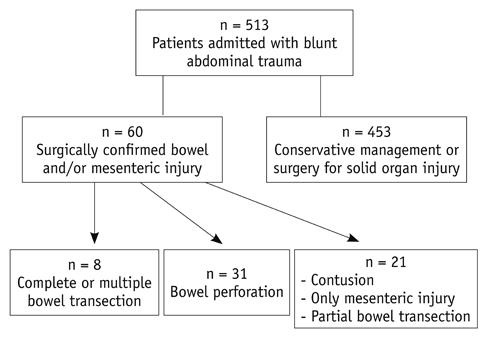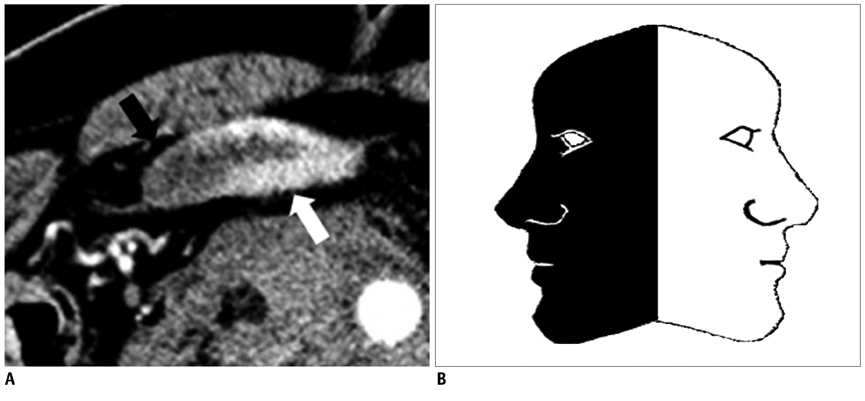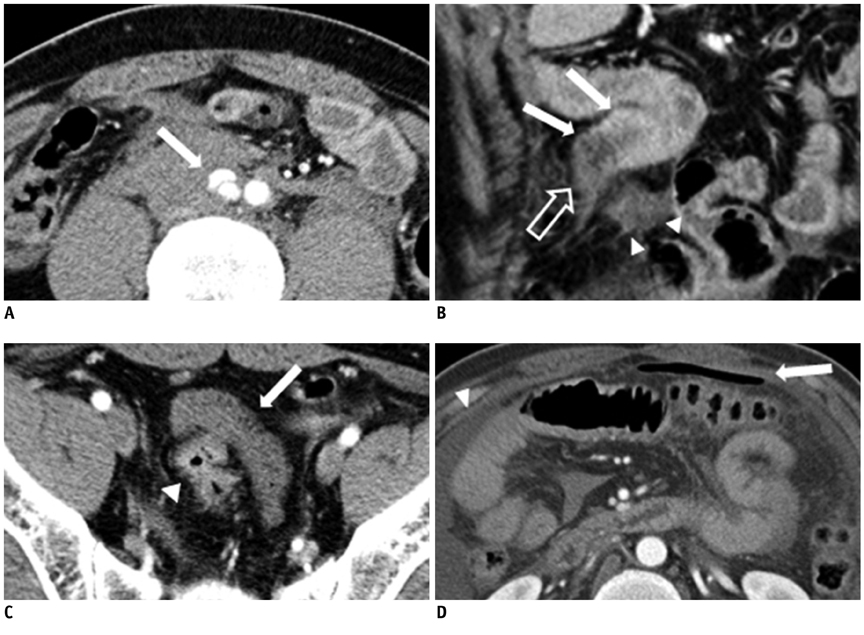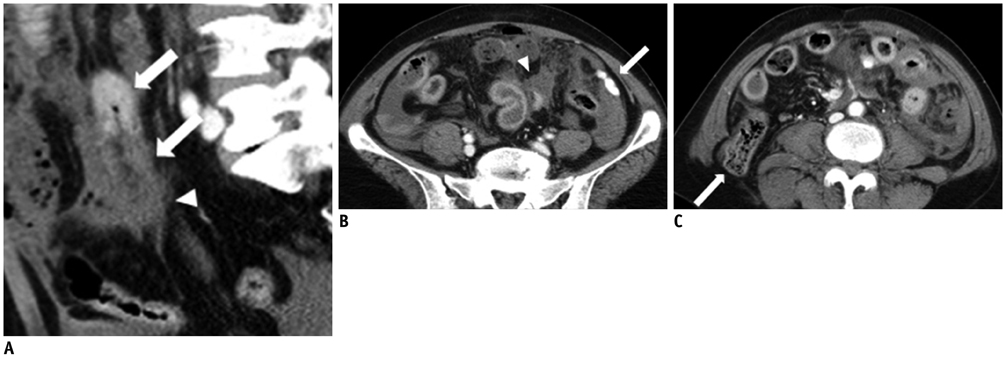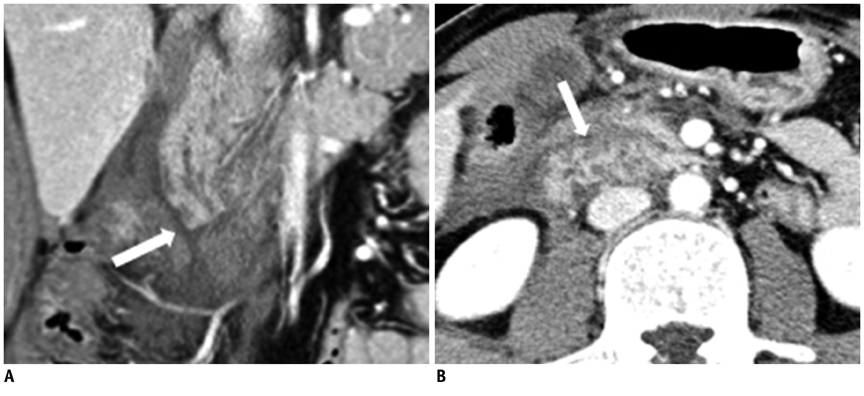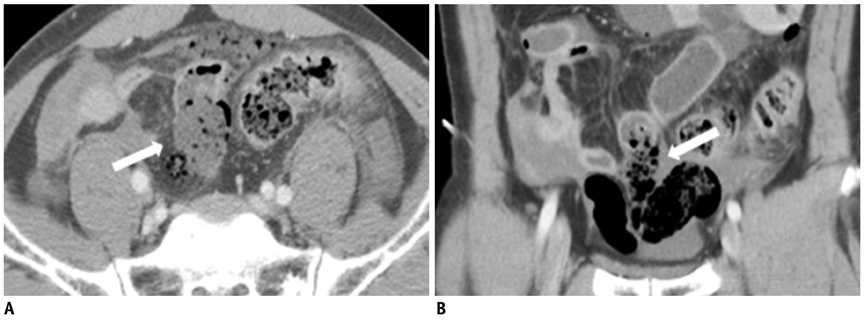Korean J Radiol.
2013 Aug;14(4):607-615. 10.3348/kjr.2013.14.4.607.
Multidetector CT Findings of Bowel Transection in Blunt Abdominal Trauma
- Affiliations
-
- 1Department of Radiology, Hallym University College of Medicine, Kangnam Sacred Heart Hospital, Seoul 150-950, Korea. baccas@hallym.or.kr
- 2Department of Radiology, Hallym University College of Medicine, Hallym University Sacred Heart Hospital, Anyang 431-070, Korea.
- KMID: 1715765
- DOI: http://doi.org/10.3348/kjr.2013.14.4.607
Abstract
OBJECTIVE
Though a number of CT findings of bowel and mesenteric injuries in blunt abdominal trauma are described in literature, no studies on the specific CT signs of a transected bowel have been published. In the present study we describe the incidence and new CT signs of bowel transection in blunt abdominal trauma.
MATERIALS AND METHODS
We investigated the incidence of bowel transection in 513 patients admitted for blunt abdominal trauma who underwent multidetector CT (MDCT). The MDCT findings of 8 patients with a surgically proven complete bowel transection were assessed retrospectively. We report novel CT signs that are unique for transection, such as complete cutoff sign (transection of bowel loop), Janus sign (abnormal dual bowel wall enhancement, both increased and decreased), and fecal spillage.
RESULTS
The incidence of bowel transection in blunt abdominal trauma was 1.56%. In eight cases of bowel transection, percentage of CT signs unique for bowel transection were as follows: complete cutoff in 8 (100%), Janus sign in 6 (100%, excluding duodenal injury), and fecal spillage in 2 (25%). The combination of complete cutoff and Janus sign were highly specific findings in patients with bowel transection.
CONCLUSION
Complete cut off and Janus sign are the unique CT findings to help detect bowel transection in blunt abdominal trauma and recognition of these findings enables an accurate and prompt diagnosis for emergency laparotomy leading to reduced mortality and morbidity.
Keyword
MeSH Terms
Figure
Cited by 1 articles
-
Multidetector CT in Blunt Abdominal Trauma:Imaging Findings and Pitfalls
Juyeon Lee, Jhii-Hyun Ahn
J Korean Soc Radiol. 2019;80(3):445-465. doi: 10.3348/jksr.2019.80.3.445.
Reference
-
1. Dauterive AH, Flancbaum L, Cox EF. Blunt intestinal trauma. A modern-day review. Ann Surg. 1985; 201:198–203.2. Cox EF. Blunt abdominal trauma. A 5-year analysis of 870 patients requiring celiotomy. Ann Surg. 1984; 199:467–474.3. Buck GC 3rd, Dalton ML, Neely WA. Diagnostic laparotomy for abdominal trauma. A university hospital experience. Am Surg. 1986; 52:41–43.4. Rizzo MJ, Federle MP, Griffiths BG. Bowel and mesenteric injury following blunt abdominal trauma: evaluation with CT. Radiology. 1989; 173:143–148.5. Davis JJ, Cohn I Jr, Nance FC. Diagnosis and management of blunt abdominal trauma. Ann Surg. 1976; 183:672–678.6. Atri M, Hanson JM, Grinblat L, Brofman N, Chughtai T, Tomlinson G. Surgically important bowel and/or mesenteric injury in blunt trauma: accuracy of multidetector CT for evaluation. Radiology. 2008; 249:524–533.7. Croce MA, Fabian TC, Menke PG, Waddle-Smith L, Minard G, Kudsk KA, et al. Nonoperative management of blunt hepatic trauma is the treatment of choice for hemodynamically stable patients. Results of a prospective trial. Ann Surg. 1995; 221:744–753. discussion 753-755.8. Miller PR, Croce MA, Bee TK, Malhotra AK, Fabian TC. Associated injuries in blunt solid organ trauma: implications for missed injury in nonoperative management. J Trauma. 2002; 53:238–242. discussion 242-244.9. Menegaux F, Trésallet C, Gosgnach M, Nguyen-Thanh Q, Langeron O, Riou B. Diagnosis of bowel and mesenteric injuries in blunt abdominal trauma: a prospective study. Am J Emerg Med. 2006; 24:19–24.10. Fakhry SM, Brownstein M, Watts DD, Baker CC, Oller D. Relatively short diagnostic delays (< 8 hours) produce morbidity and mortality in blunt small bowel injury: an analysis of time to operative intervention in 198 patients from a multicenter experience. J Trauma. 2000; 48:408–414. discussion 414-415.11. Robbs JV, Moore SW, Pillay SP. Blunt abdominal trauma with jejunal injury: a review. J Trauma. 1980; 20:308–311.12. Killeen KL, Shanmuganathan K, Poletti PA, Cooper C, Mirvis SE. Helical computed tomography of bowel and mesenteric injuries. J Trauma. 2001; 51:26–36.13. Hughes TM, Elton C. The pathophysiology and management of bowel and mesenteric injuries due to blunt trauma. Injury. 2002; 33:295–302.14. Brofman N, Atri M, Hanson JM, Grinblat L, Chughtai T, Brenneman F. Evaluation of bowel and mesenteric blunt trauma with multidetector CT. Radiographics. 2006; 26:1119–1131.15. Malhotra AK, Fabian TC, Katsis SB, Gavant ML, Croce MA. Blunt bowel and mesenteric injuries: the role of screening computed tomography. J Trauma. 2000; 48:991–998. discussion 998-1000.16. Brody JM, Leighton DB, Murphy BL, Abbott GF, Vaccaro JP, Jagminas L, et al. CT of blunt trauma bowel and mesenteric injury: typical findings and pitfalls in diagnosis. Radiographics. 2000; 20:1525–1536. discussion 1536-1537.17. Lubner M, Demertzis J, Lee JY, Appleton CM, Bhalla S, Menias CO. CT evaluation of shock viscera: a pictorial review. Emerg Radiol. 2008; 15:1–11.18. Wiesner W, Khurana B, Ji H, Ros PR. CT of acute bowel ischemia. Radiology. 2003; 226:635–650.19. Wittenberg J, Harisinghani MG, Jhaveri K, Varghese J, Mueller PR. Algorithmic approach to CT diagnosis of the abnormal bowel wall. Radiographics. 2002; 22:1093–1107. discussion 1107-1109.20. Sivit CJ, Eichelberger MR, Taylor GA. CT in children with rupture of the bowel caused by blunt trauma: diagnostic efficacy and comparison with hypoperfusion complex. AJR Am J Roentgenol. 1994; 163:1195–1198.21. Stuhlfaut JW, Soto JA, Lucey BC, Ulrich A, Rathlev NK, Burke PA, et al. Blunt abdominal trauma: performance of CT without oral contrast material. Radiology. 2004; 233:689–694.22. Donohue JH, Federle MP, Griffiths BG, Trunkey DD. Computed tomography in the diagnosis of blunt intestinal and mesenteric injuries. J Trauma. 1987; 27:11–17.23. Hagiwara A, Yukioka T, Satou M, Yoshii H, Yamamoto S, Matsuda H, et al. Early diagnosis of small intestine rupture from blunt abdominal trauma using computed tomography: significance of the streaky density within the mesentery. J Trauma. 1995; 38:630–633.24. Mirvis SE, Gens DR, Shanmuganathan K. Rupture of the bowel after blunt abdominal trauma: diagnosis with CT. AJR Am J Roentgenol. 1992; 159:1217–1221.
- Full Text Links
- Actions
-
Cited
- CITED
-
- Close
- Share
- Similar articles
-
- Multidetector CT in Blunt Abdominal Trauma: Imaging Findings and Pitfalls
- Utility of Computed Tomography in Diagnosis of Small Bowel Perforation after Blunt Abdominal Trauma
- Complete Transection of the Cystic Duct and Artery after Blunt Trauma: A Case Report
- Blunt Transection of the Entire Anterolateral Abdominal Wall Musculature Following Seatbelt-Related Injury
- Traumatic Abdominal Wall Hernia: A Case Report

